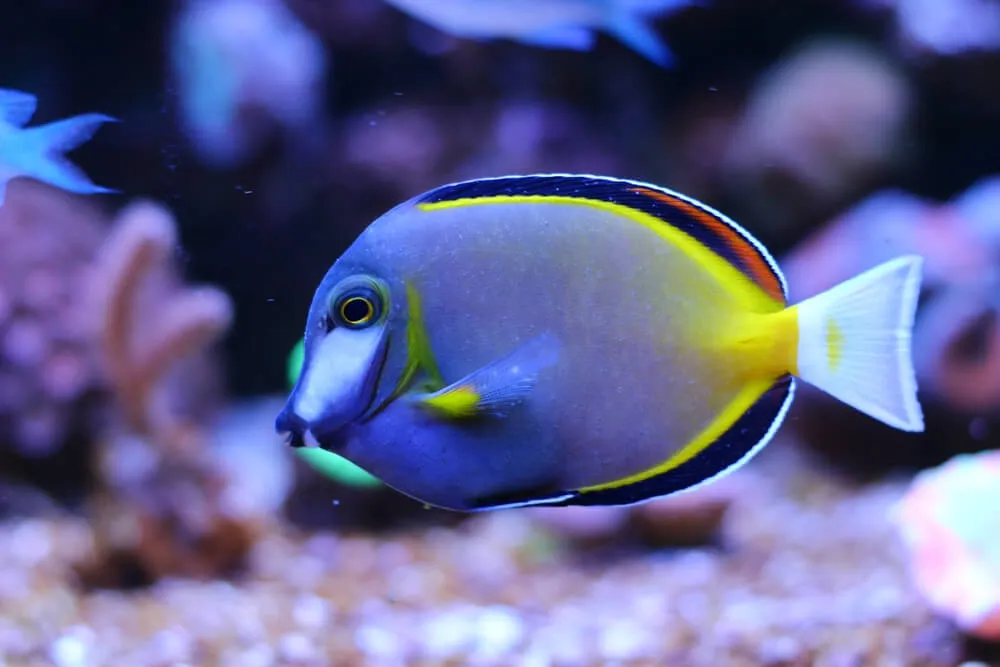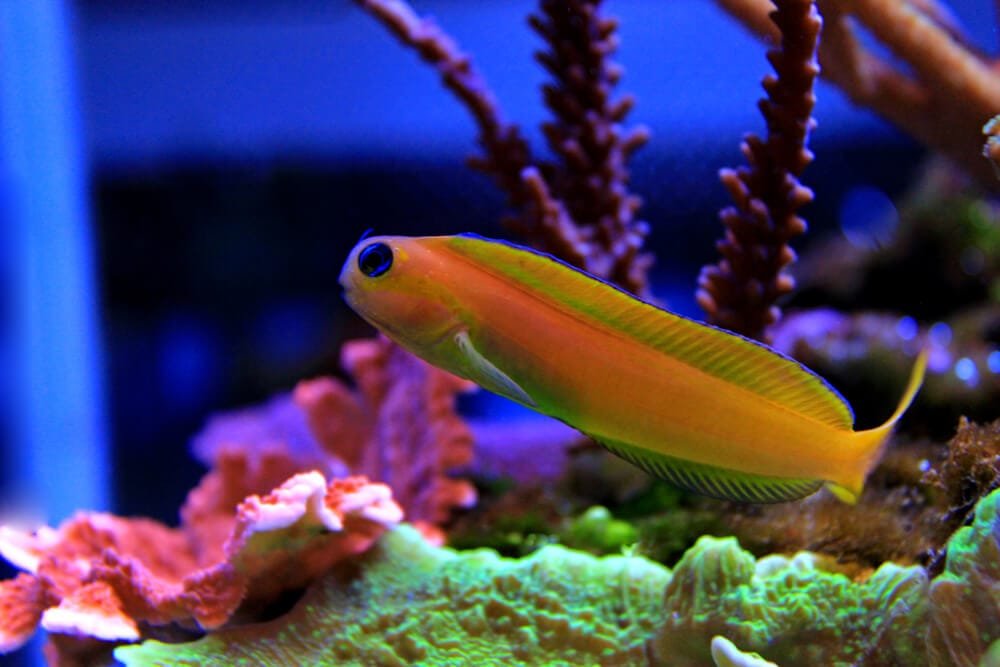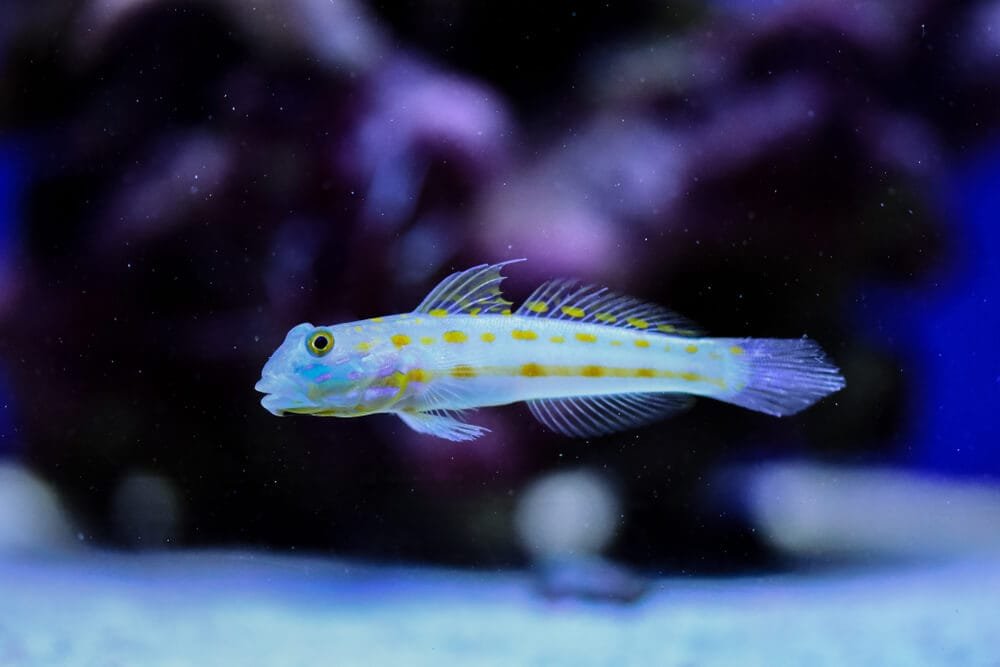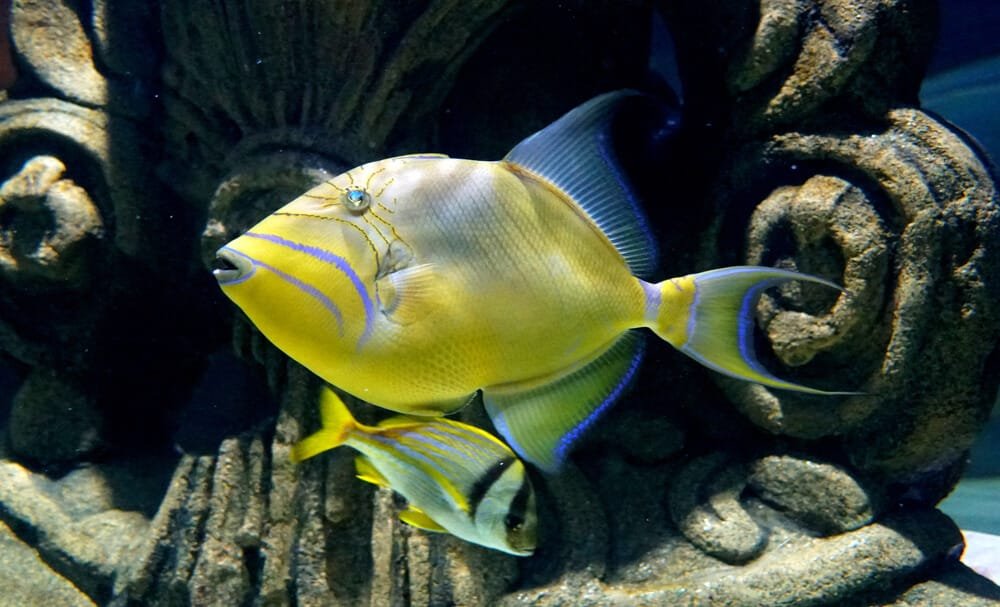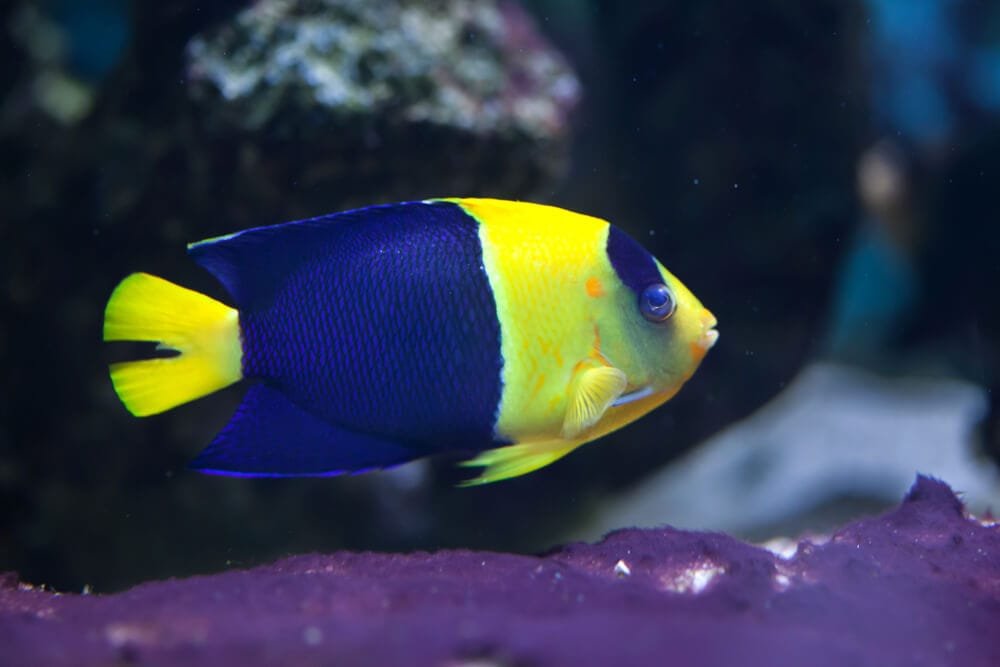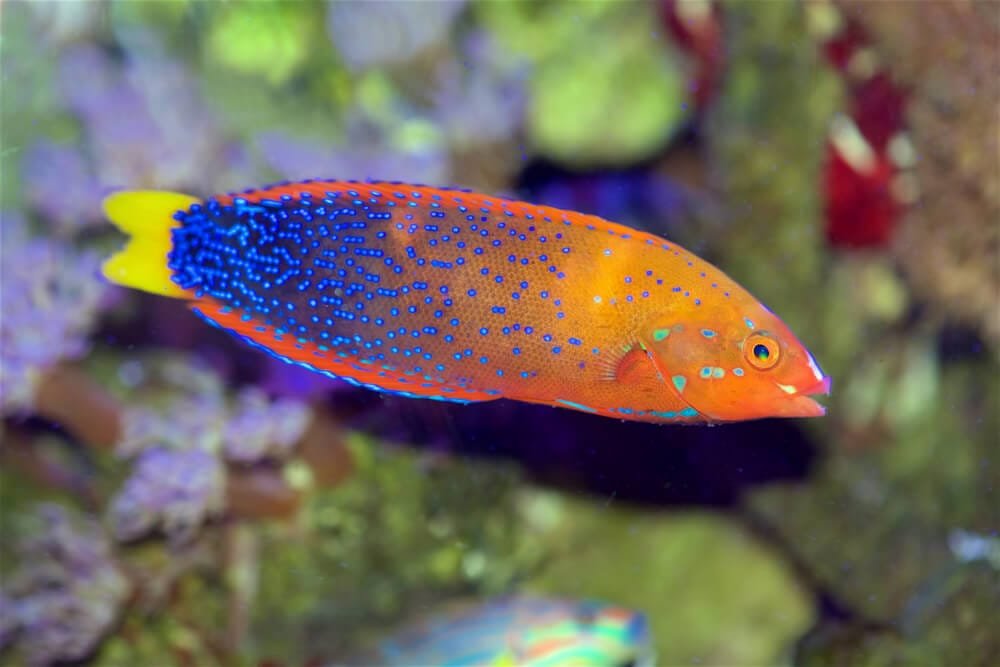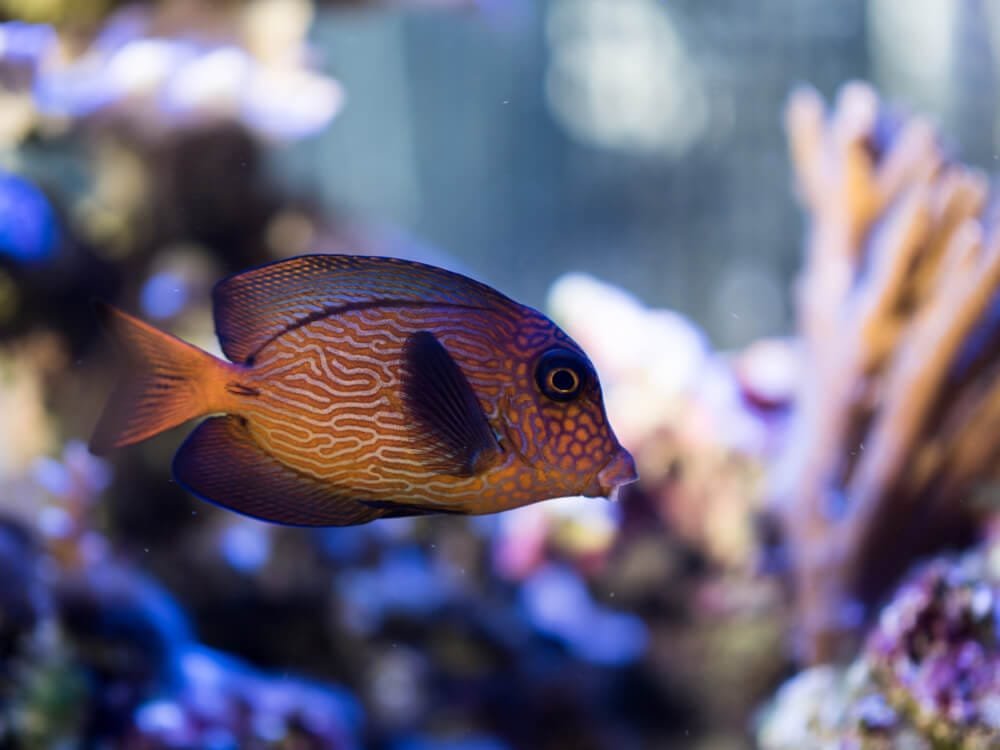The Rainbow Parrot Fish: 23 Interesting Facts

There’s a fish out there that can change gender. Have you heard of it? That fish is the rainbow parrot fish, which is the world’s biggest herbivorous fish. This fish may be observed around the coral reefs within the western parts of the Atlantic Ocean, the Caribbean, the Bahamas, the Bermuda, as well as Florida.
It is an incredible fish that feeds on algae almost all the time to keep their nearby coral reefs tidy. It possesses one-of-a-kind merged, bunched teeth that are specifically designed to help in this procedure.
The species is one member of the Scaridae family. All these are referred to as parrotfish due to their jaws that resemble beaks, which are a common trait. It’s worth noting that the parrotfish excretes sand!
They pulverize calcium carbonate from the reef, which can’t be digested at all by their intestines, and they excrete it out as sand while biting and consuming the algae upon the rocks as well as corals in the reef. Additionally, they possess a unique pharyngeal apparatus that serves as a supplementary pair of jaws for crushing and processing food.
Their reproductive parts are very remarkable since a few rainbow parrotfish, for example, can undergo a sex change from female to male.
23 Interesting Facts About The Rainbow Parrot Fish
1. The Many Species Of Parrotfish
There are over 80 parrotfish species which have been identified. Although there’s no concrete information on the population of the rainbow parrotfish, it’s documented that they have been endangered and were previously classified as Vulnerable owing to the loss of their habitat along with overfishing.
2. Variety Of Habitats
Generally, rainbow parrotfish may be found in tropical seas of the western parts of the Atlantic and also within the Caribbean. They can also be found in Florida, the Bahamas, Venezuela, Bermuda, and Argentina.
This species of fish may be found on protected coral reefs from depths ranging between 10 to 82 feet. Throughout the evening, they shelter in the nooks and crannies of the various rocks deep in the water to avoid predators.
The youngsters spend much of their time within mangroves along coral reefs, occasionally on ocean stones, and often in shallow seas. They favor mangroves as a rich food supply and a place to hide from predators.
3. How They Work Together
Scarus guacamaia, or commonly referred to by people as the rainbow parrotfish, is extremely gregarious and moves in male-dominated clusters of around 40 fish to defend themselves against predators. They bring to mind a flock of livestock grazing on a green meadow and a school of fish feeding on a reef.
4. Lengthy Lifespan
The parrotfish species has a potential life span around 16 years. Bigger parrotfish have longer lives on average. The biggest scarid, which is called Bolbometopon muricatum, may survive for approximately 20 years.
Owing to habitat degradation as well as overfishing, their conservation condition was previously classified as Vulnerable. However, they are now classified as Near Threatened since the population number cannot be assessed.
5. Weird Genders
A rainbow parrotfish will travel in harem clusters, each of which is controlled by one male that mates with all the other adult female fishes throughout the group. Each such group includes both main and secondary guys.
Males of the species are born as primary males. Whenever the dominant main male dies, one dominant female from within that group switches its sex into male, altering their appearance and behaviors as well. This female, that is now male, has become the secondary male, who was born feminine but was transformed into a man.
Spawning occurs when females release hundreds of eggs for fertilization with the predominant male’s sperm. Stealth spawning occurs whenever a cluster of prime males disguises themselves as females and penetrates the harem.
These are all suited to this type of procedure, releasing a swarm of gametes that overwhelms the principal male. Females have a better likelihood of conception as a result of this.

6. Birthing Process
After roughly 25 hours, the fertilized eggs develop into little forms. These possess a little body, just under 0.1 inches of length, and they float in the water, finally settling on the reefs. After roughly three days, the larvae begin to eat. There is zero parental involvement in their development.
7. Wondrous Looks
All rainbow parrotfishes look stunning, with vibrant orange and green coloring. Its fins, head, as well as tail are colored orange, while the back is a vibrant green. This given description is applicable to huge males. Females as well as smaller males seem bland, with dull orange as well as green coloring.
Their packed teeth give their mouth an appearance of being tough and resembling the beak of a parrot. Its teeth plates are such a blue-green color, their fins are just a drab orange color, and its tongues appear green.
These fishes are a bunch of cute marine animals with brilliant colors on their bodies and tails. They are covered in green, blue, as well as orange. They help the beautiful coral reefs in Florida as well as the Atlantic look gorgeous and they assist in keeping algae at bay.
8. Communication Method
The way that the rainbow parrotfish communicates is more on the visuals. The dominant males of a harem group dissuade competing male fish from invading by turning their bodies heavier in color.
By average, the fish are particularly noisy because they make a lot of noise as their bodies rub against the coral reefs.
9. Mixed Sizes
Rainbow parrotfish may reach a peak length of about 4 feet, however many are much smaller. The fish of this species are the largest herbivores of the vast parrotfish species.
10. Rambunctious Routine
There really isn’t much known regarding the parrotfish’s routine. Eating and scraping algae account for 90% of the time spent by the rainbow parrotfish. As a result, they really aren’t noted for their diverse routine.
They do, however, move in groups using their colorful fins and are therefore not physically inactive. Throughout the night, these fish hide in nooks and crannies as well as around rocks.
11. Astounding Measurements
The mass of a rainbow parrotfish may reach 44 pounds. Among the species of parrotfish, this might be roughly half the mass of something like the green humphead, which can grow to a whopping 51 inches of length and weigh about 100 pounds.
12. Life Basics
The males don’t have a special name for them and neither do the females.
Once the rainbow parrotfish egg hatches, it transforms into larva, which subsequently matures into little fish to eventually become juveniles.
The principal feed of the species is algae, seaweed, and organic materials found around the coral reef, which would be found mostly on the surfaces of the corals. Their merged teeth are ideally suited to scraping food.
Yes, since the body of such a fish contains toxins, the species may be deadly if eaten.
13. Viability As Pets
Generally speaking, these fish are suitable pets only if you’re experienced with aquariums and are an enthusiast. You’d need an extremely large aquarium since they get big in size and need the space.
What you should know is that these fish do not get along well with other fish species. Additionally, make sure you get your rainbow parrotfish from a sustainable source, so you don’t end up causing coral reefs to lose out on their helpers.
14. Preservation Needs
According to a study, should parrotfish not be preserved, then most, if not all, Caribbean reefs might be extinct within two decades! This is due to the fact that these fish are very successful at keeping algae off the corals thus allowing them to flourish freely.

15. Sleep Routine
For around 30 minutes a night, some members of the species produce mucus, which looks to be a sort of sleeping bag for the rainbow parrotfish. This has a nasty odor and generally keeps predators away during the nighttime hours.
16. Endangerment Debacle
All rainbow parrotfishes are in danger as they are on the verge of extinction. This species is jeopardized mostly as a result of humans, overfishing, as well as habitat destruction.
It is thus imperative that this species be restored throughout the Caribbean, Florida, or other regions in order to maintain the ecological balance of the environment.
17. Toxic Poisons
A large number of parrotfish varieties are hazardous and should not be ingested in any quantity. Some species, though, are considered delicacy in some regions of the globe, which might be something you shouldn’t partake in so that the rainbow parrotfish can stay on this planet.
18. Rainbow Parrotfish’s Home
Rainbow parrotfishes are native to Mexico within the nearby expanse of the Atlantic, but it has a very limited range. It could only be located within the Caribbean as well as the wonderful Mexico Gulf near the grand Yucatán Peninsula.
If you saw this fish in real life, you’d realize how it’s a pretty big fish that appears to have a slightly condensed, robust, ovate, and oval-shaped body that is also long and wide. Based on how they end up developing into their older forms from their younger stages, they look very different in hue.
19. Changing Appearance
Rainbow parrotfish look different based on how old they are, which makes them look different. It looks like this: The young all seem to be reddish brown, and the contours of their bodies may be described as bronze. Some parts of their bodies, such as their torsos and the markings bordering their eyes, are colored orange.
As adults, the fish have a black rear and a bronze front. Their body’s edges and foundations of their caudal and anal fins are colored green, while its center looks to be orange.
20. Anatomy Of Their Fins
Round and blunt is how they look. This is what makes up their three fins. They are made from spines as well as rays. This is how their anal fin looks. It has three spines and nine rays. Each fin has nine spines and ten rays. Its dorsal fin comprises 16 rays, while its pectoral fin features 16 spines.
21. Anatomy Of Their Head
The rainbow parrotfish have 51 to 64 rakers in their gills. They have a body that is encased in big sizes. As detritivores, they actually consume detritus as well as bacteria clusters as well as tiny benthic invertebrates.
These fish have strong parrot-like teeth which get used to break down skeletal coral substances like the above.
22. Their Habitat
These fishes may be found within their coral reef habitats at depths of up to 75 feet. Around mangroves, juveniles may also be spotted. This species is the largest parrotfish in all of the Caribbean, reaching a top size of 3 feet and 11 inches.
If they’re under extreme duress, they hide or sleep in their makeshift caves. A regular rainbow parrotfish may live to an upwards of 16 years on average.
They swim about reefs with their trusty pectoral fins. Their tail is really only employed for quick bursts of speed. They clean coral algae as well as polyps using their beak-like mouths. They may also be observed defecating, which looks as white clouds made mostly of corals and limestone.
23. Reproductive Behavior
Parrotfishes, similarly to wrasses, exhibit two types of reproductive activity. Along with the other guys, the younger but less vibrant males fertilize one female’s eggs. Whereas the huge males which are multicolored, they each maintain their own area where they go get a female fertilized.

The Rainbow Parrotfish’s Role In Keeping Coral Reefs Healthy
Furthermore, the structural character of the varied habitat as well as the vegetation present at various elevations influence the distribution of these organisms. Herbivory was determined to be greatest in the place with the most remarkable ecological complexity, as measured by grazing intensities.
The increasing availability of refuge and plenty of food contributes to improved herbivory rates, which is why fish numbers have grown.
Herbivory has been seen to increase away from irregular seagrass areas. Because of reduced fish movement, increasing the distance from any coral reef lowered herbivory rate.
Furthermore, elevated herbivory rates may be attributable to significant grazing by the rainbow parrotfish, which may not stand the test of time.
They move between surroundings depending on their living experience, allowing them to develop as big as possible until moving on to something else.
Seagrass As Their Primary Habitat
It was expected that the usage of intermediary nursery conditions would enhance tiny fish survival. The transitional period and nursery stages between any mangrove, seagrass, as well as uneven reefs assist to alleviate marine bottlenecks throughout the early growth phase.
It is possible for predatory bottlenecks to arise when predation conflict prevents a large proportion of a species from reproducing.
The existence of seagrass meadows has even been linked to somewhat larger concentrations of rainbow parrotfish amid coral reefs. Nevertheless, other investigations on similar nursery conditions have had conflicting outcomes.
The rising numbers of juveniles and adults of rainbow parrotfishes seen throughout any coral reef and their communities, combined with the utter lack of mangroves, appear to suggest that mangroves were never a required habitat in certain regions for nursery, development, and reproducing, and also that seagrass along with coral debris satisfy as something of a preferable option.
How Eating Habits Of Parrot Fish Help The Reefs
They will roam wide regions while searching for food. Due to its eating habits, a rainbow parrotfish must be crucial when it relates to bioerosion concerns. You must be trying to find out what parrotfish consume.
They ought to be capable of scraping algae off rocks with the help of their keen beaks. This will also aid in the preservation of coral sand as well as the maintenance of the reef environment. They pulverize tiny pebbles during feeding and expel sand as some kind of a byproduct.
Rainbow parrotfish also assist in maintaining coral reefs healthy by monitoring algae concentrations on a continuous basis. The term “parrotfish” refers to the front teeth they have that are fused together. Their teeth end up resembling beaks.
Their teeth aid in adaptation and enable them to consume algae that live on corals as well as the coral itself. Simultaneously, they may use their teeth to delicately scrape off then consume algae. These fish are often strong enough to chomp off big chunks of coral.
Then coral is crushed into little bits by their secondary row of teeth inside their throat, allowing them to consume it effortlessly. It is uncertain if somehow the algae and coral polyps that they consume are sourced from coral reefs.
Cleaning Up Algae In The Marine Environment
Rainbow parrotfish consume a large quantity of algae throughout their environment. This process contributes to the balance of nature and the elements within their climate. Many take them for herbivores since they consume so much algae.
They also consume a variety of tiny bacteria found throughout the waters. They may also consume coral polyps present in their native environment.
These fishes have often been thought to be herbivores. They typically feed on coral reefs, having their diet mainly constituted from marine organic debris, algae, and seaweed.
The unique teeth aid in removing algae from coral surfaces. A newly formed larva begins eating after 3 days, however it is uncertain how long that stage lasts. They might even congregate in huge numbers to feed and to fend against predators.
Frequently Asked Questions About The Rainbow Parrotfish
Are Rainbow Parrot Fish Rare?
When you say uncommon, do you imply endangered? If that’s the case, then certainly. Mangrove habitat degradation, pollution, habitat fragmentation, and fishing are all threats to the rainbow parrotfish. Conservation efforts are now ongoing, including the preservation of mangroves as well as the separation of people.
Why Are Rainbow Parrotfish Endangered?
The rainbow parrotfish is threatened with extinction because its natural habitats are within and around coral reefs. A great deal of devastation and pollution has been wreaking havoc on this species’ environment.
This fish is one of, if not, the most important component in maintaining the health of numerous coral reefs around the world. In addition, the coral reefs provide a source of food for these fish.
Are These Fishes Predators Or Prey?
The rainbow parrotfish may be considered prey. They are preyed upon by a variety of predators, including moray eels as well as reef sharks.
There are just two significant natural predators that prey on the rainbow parrotfish in its native environment. It will have to stay aware and not get caught by surprise by the reef sharks or moray eels. However, there will be some other fish which might want to take a bite out of the rainbow parrotfishes as well.
What Is Threatening The Parrot Fish?
Fortunately, it has been discovered that the rainbow parrotfish population has stabilized in tiny numbers across its habitat.
Overfishing and degradation of mangrove ecosystems, on the other hand, have resulted in the species’ continuing decline. In conclusion, people are posing a danger to the population of these fishes.
Is Parrot Fish Poisonous?
A large number of parrotfish varieties are poisonous and should not be ingested in any quantity. Some varieties, though, are considered a delicacy in some regions of the globe, and the rainbow parrotfish is thought to be one of them.
Because parrotfish graze on coral as well as algae, their taste is sweet yet reminiscent of shellfish. It has a distinct taste, one that some people find to be quite pleasing.
Conclusion
The rainbow parrotfish is a unique and intriguing species of parrotfish. This organism has a variety of interesting characteristics, and it plays a critical part in the ecosystems of coral reefs.
Human people, on the other hand, have been a danger to these fish for a long time, and it may be some time before they are able to recover. Don’t be alarmed; their numbers have stabilized and may even be increasing in certain cases.
Remember, you should never purchase rainbow parrotfish unless you are certain that it has been received from a reputable source.
The fact that this fish is endangered in the first place may be attributed to irresponsible sources for the fish. It might not even be worth buying them unless you’re someone that wants to study the rainbow parrotfish and find out how you can help with its preservation.
